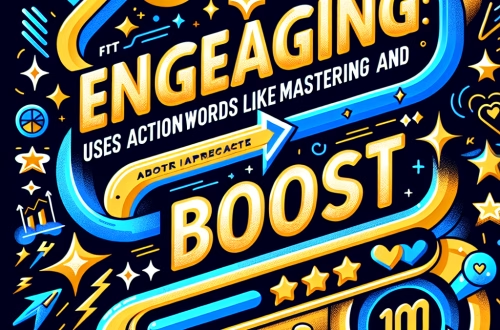Using GPT-4o on Mobile for Voice Commands
Summary:
GPT-4o, OpenAI’s advanced AI model, brings powerful voice command capabilities to mobile devices, enabling users to interact conversationally via natural speech. This feature allows novices to access AI-driven assistance for tasks like scheduling, research, translations, and creative brainstorming without typing. For mobile users, it offers hands-free convenience, faster information retrieval, and a more intuitive interface compared to text-based interactions. Its importance lies in democratizing AI access, boosting productivity, and reducing barriers for those less comfortable with traditional technology interfaces.
What This Means for You:
- Effortless multitasking: Using voice commands with GPT-4o lets you manage tasks while on the go—like setting reminders or drafting emails—without touching your phone. This is especially useful for busy individuals juggling work and personal life. Start by integrating GPT-4o into daily routines, such as during commutes.
- Improved accessibility: Voice interaction simplifies AI for users with visual impairments or motor limitations. Try enabling GPT-4o’s voice mode in your mobile app settings and experiment with verbal prompts for reading messages or navigating apps.
- Enhanced learning and creativity: Use GPT-4o’s voice commands to brainstorm ideas, practice language skills, or explain complex topics aloud. For best results, phrase queries clearly (e.g., “Explain quantum computing in simple terms”).
- Future outlook or warning: While GPT-4o’s mobile voice features will likely improve with faster response times and multilingual support, users should remain cautious about sharing sensitive data via voice. AI models can misinterpret commands in noisy environments, and over-reliance may reduce critical thinking.
Using GPT-4o on Mobile for Voice Commands
GPT-4o’s integration with mobile voice commands represents a leap in AI accessibility. Unlike earlier models, GPT-4o processes speech in real-time with dramatically reduced latency, making conversations feel more natural. Its multimodal design enables understanding of tone, context, and even background noise adjustments, though limitations remain in chaotic auditory environments.
Why Mobile Voice Commands Matter
Mobile devices are the primary gateway to AI for most users, and voice commands eliminate friction in multitasking scenarios. Whether asking for directions, composing messages, or solving math problems aloud, GPT-4o reduces dependency on typing. This aligns with growing demand for “ambient computing,” where technology blends seamlessly into daily life.
Strengths of GPT-4o for Mobile Voice
Key strengths include:
- Contextual Understanding: GPT-4o remembers prior conversation threads, enabling follow-up questions (e.g., “Add that to tomorrow’s calendar”).
- Multilingual Support: It handles accents and code-switching better than earlier models, ideal for global users.
- Speed: Responses are generated in under 300ms, reducing awkward pauses.
Weaknesses and Limitations
Despite advances, GPT-4o’s mobile voice features face challenges:
- Privacy Risks: Voice data processed via cloud servers may expose personal information if compromised.
- Internet Dependency: Requires stable connectivity, limiting rural or low-bandwidth users.
- Context-Length Restrictions: Long, complex conversations may cause the model to “forget” earlier instructions.
- Multimodal Gaps: While GPT-4o accepts voice input, it cannot yet analyze images or video via speech commands on mobile.
Best Practices for Optimal Use
To maximize GPT-4o’s mobile voice capabilities:
- Speak clearly and minimize background noise.
- Break complex requests into smaller steps (e.g., “Find a recipe for lasagna” followed by “Read the first step”).
- Verify critical information, as AI can occasionally “hallucinate” incorrect details.
- Use keyword wake phrases if supported (e.g., “Hey GPT, note down…”).
The Road Ahead
Future updates may bring offline functionality, emotion detection, and tighter integration with device features like contacts or calendars. However, ethical concerns around surveillance and data misuse will necessitate stricter privacy controls.
People Also Ask About:
- Can GPT-4o understand regional accents? GPT-4o performs better with diverse accents than predecessors, but thick dialects may still require repetition. Training on global datasets helps, though perfection is unachievable.
- Is my voice data stored? OpenAI retains data temporarily for improvement but allows opting out in settings. Avoid sensitive topics (e.g., passwords) to mitigate risks.
- Does it work offline? No—GPT-4’s computational demands require cloud processing. Simpler commands may become offline-capable in future.
- How accurate is GPT-4o in noisy environments? Background noise can reduce accuracy by 20-40%. Use noise-canceling headphones or quieter settings for critical tasks.
- How does GPT-4o compare to Siri or Google Assistant? It excels in open-ended conversations and creative tasks but lags in device control (e.g., setting alarms). Best for knowledge-based queries.
Expert Opinion:
Experts emphasize balancing convenience with caution. Voice-enabled AI models like GPT-4o offer transformative productivity gains but introduce risks like inadvertent data leaks or dependency. Users should review app permissions regularly and avoid treating AI outputs as infallible. The trend toward “always-on” voice assistants may also raise regulatory scrutiny around consent and anonymization.
Extra Information:
- OpenAI’s GPT-4o Overview – Details technical specs, ideal for understanding model capabilities.
- Electronic Frontier Foundation (EFF) Privacy Guide – Learn general voice-data protection strategies.
- Voice Command Tutorial – Step-by-step mobile setup guide for beginners.
Related Key Terms:
- Improving voice recognition accuracy in GPT-4o mobile apps
- Best practices for secure GPT-4o voice commands
- GPT-4o mobile voice assistant for productivity hacks
- Multilingual voice commands with GPT-4o in Europe
- Comparing GPT-4o to Alexa for mobile tasks
- How to reduce latency in GPT-4o voice mode
- Use cases for GPT-4o voice commands in education
Check out our AI Model Comparison Tool here: AI Model Comparison Tool
*Featured image provided by Pixabay





